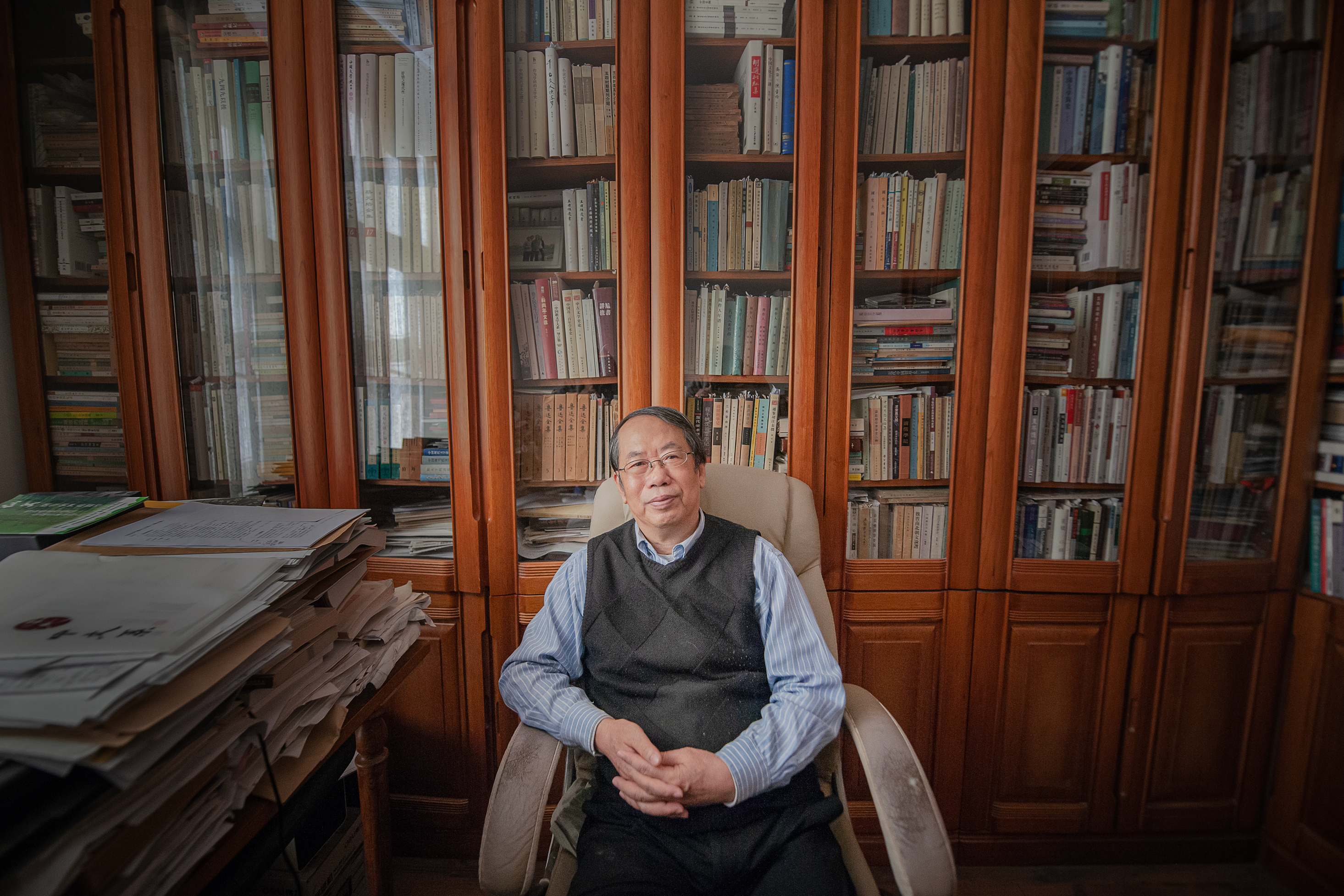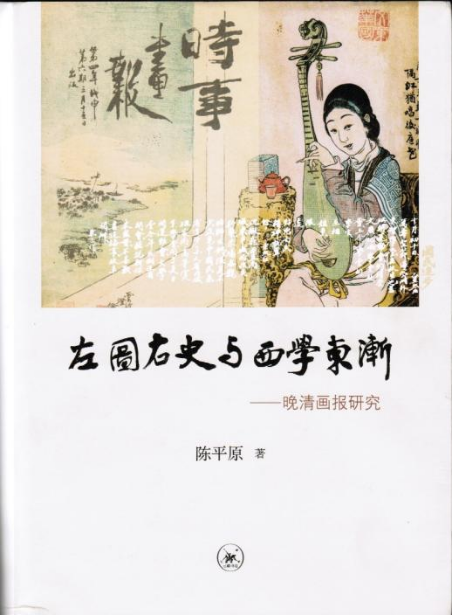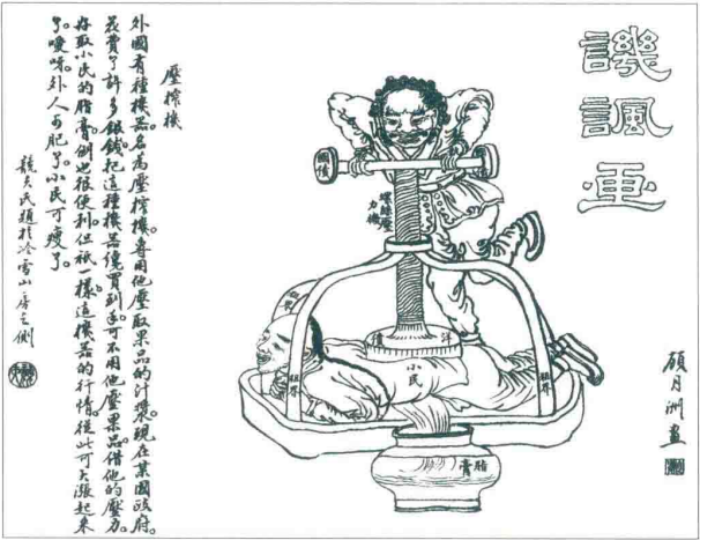Peking University, November 11, 2025: A savage-looking man stands on top of an outsize juice extractor, pushing down the corkscrew on another man with a Qing-style hair braid prostrated at the bottom, his “juice” flowing to a large bowl by the side, inscribed with the words “flesh and blood.”
This primitive political caricature is an illustration from the late Qing pictorial “Xingqi Pictorial” (《星期画报》), and implies that the Qing government was purchasing machines from the West to exploit its own people, according to the caption.
An illustration depicting a “human juice extractor” in “Xingqi Pictorial”.
Caricature like this one carrying a sharp political tone was not a one-off among the late Qing pictorials, which had become a popular medium to spread news and voice for the people, according to Chen Pingyuan.
The PKU professor of Chinese Language and Literature had spent 22 years researching and collecting late Qing pictorials in an effort to piece together an authentic depiction of a churning imperial China. His crowning achievement—
The History in Graphics and the Eastward Spread of Western Scholarship (《左图右史与西学东渐——晚清画报研究》)—won the first prize in a 2024 Ministry of Education research award for humanities and sociology.

Professor Chen Pingyuan
Down-to-earth Enlightenment
There had been a tradition with Chinese classics where text was accompanied by pictures, but pictorials did not become mainstream until “the Eastward spread of Western knowledge,” which refers to the fraught process of Western culture and knowledge seeping into China in the mid-1800s, after China was forced to open its doors.
Western pictorials comprising news and artistic drawings became a model for their Chinese counterparts, who looked to graphics as a form of "down-to-earth enlightenment", as it required little literacy skills to understand.
Differing from the magazines catering to literati, such as New Youth, or LA JEUNESSE, which preached on high-flown ideologies, the pictorials were rooted on the ground, covering news in politics and technology, as well as street anecdotes, fiction, and even fashion. They provided a direct channel to feel the pulse of the ordinary citizens.
Professor Chen’s compendium of pictorials comprises over 300 pictures spanning 30 years, from late Qing to early Republic of China, starting with “Dianshizhai Pictorial”(《点石斋画报》) in 1884 and ending with “Zhenxiang Pictorial” (《真相画报》) in 1913. Drawing from decades of research in literature and education, Professor Chen dissects the late Qing pictorial scene and its far-reaching implication in this monumental book.
Dianshizhai Pictorial
Twenty-two Years of Research
The abstract on the back cover of the book starts with this sentence: “Chen Pingyuan had traveled for two decades to scour for materials…to further his research on modern literature and culture.”
This is no empty talk. One chapter of the book about science fiction dates back to 1995, since when Professor Chen has published more than ten books containing pictorial information, covering a timeline that stretches from late Qing all the way to contemporary China. But it was the late Qing pictorials with which he had been the most occupied.
Throughout the two decades, he travelled all over the world hunting for the real copies of pictorials preserved from late Qing, leaving his footprints in the most well-known libraries—National Library of China, the Tōyō Bunko of Japan, the British Library, the Heidelberg University Library of Germany, the Harvard-Yenching Library, the PKU Library, etc.
Through detailed analysis, Professor Chen shines light on the different roles played by different forms of media in navigating the people through the tempest of social changes sweeping across China.

The History in Graphics and the Eastward Spread of Western Scholarship
Written by: Cui Anyi
Edited by: Leow Kai Lim, Chen Shizhuo
Source: PKU WeChat (
Chinese)



